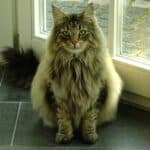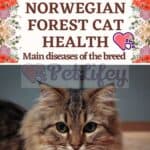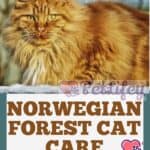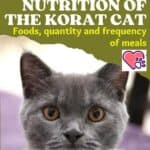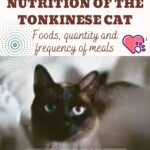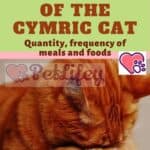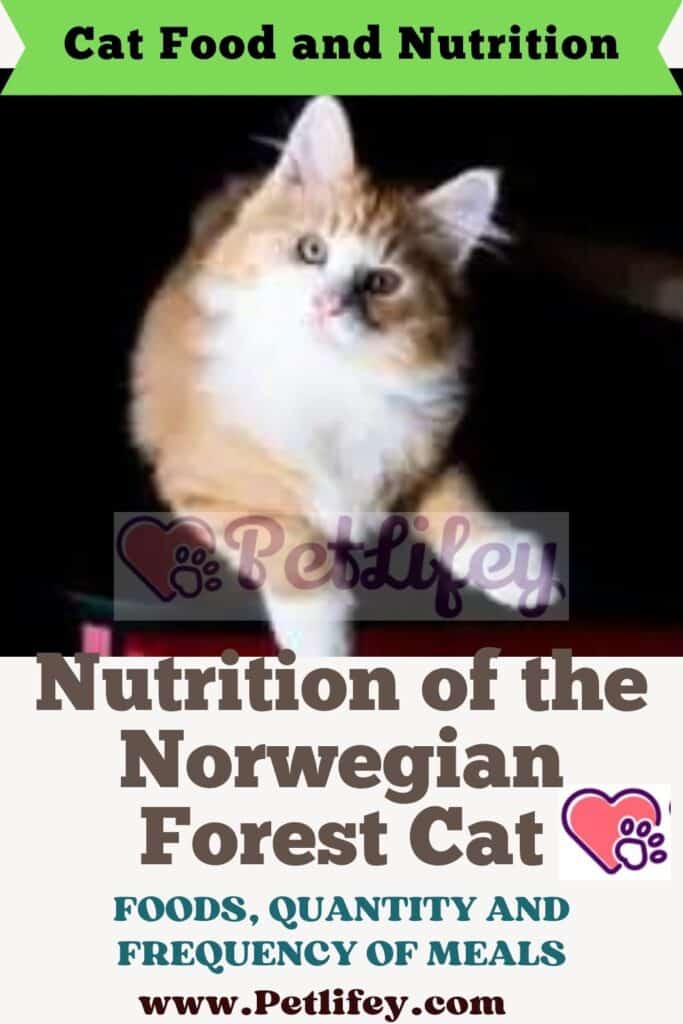
Nutrition of the Norwegian Forest Cat, the secrets of perfect physical shape thanks to adequate nutrition for this feline.
Today we will deal with the feeding of the Norwegian Forest cat, in particular the frequency of meals and the quantities necessary for the daily requirement.
Which foods are most suitable for this particular breed of cat with distant origins and with a splendid semi-long coat.
So if you have decided to adopt this elegant feline, you just have to stock up on information, to keep this extraordinarily fascinating specimen as healthy as possible. You will find these news in the next paragraphs, along with many other curiosities.
What to feed the Norwegian Forest Cat
Adopting a purebred cat means taking care of a cat that has needs and habits to respect, even as regards nutrition.
Precisely with regard to the feeding of the Norwegian Forest Cat, a very specific speech must be made as too much appetite could cause it to feed more than necessary and accumulate excess pounds.
The Norwegian Forest Cat must have a controlled diet and must adapt to a disciplined diet regime.
However, as with all cats, it must be fed a diet based on a high amount of fresh meat and protein to stay healthy.
Felines are carnivores by nature, so they need a diet that provides what meat and fish can release.
The best food for the Norwegian Forest cat is where meat is the main ingredient and it is even better if the meat comes from offal such as liver or heart.
Likewise, include vegetables and fiber in your food to help keep your skin, coat, and muscles in good condition.
All this, that is a complete and balanced meal, can be offered by giving the cat dry food, available on the market in specialized shops.
This formula must contain, for the most part, animal proteins; while the fat must not exceed 10%.
Eventually, for those who like to personally prepare their kitten’s meals, it is possible to use the following foods:
- White meat;
- lean fish;
- offal;
- fresh fruit and vegetables;
- probiotics.
Pay attention to the administration of rice in your diet, as it tends to manifest intolerances, generating even strong allergic reactions in the body, characterized by dermatitis and intestinal disorders in the Norwegian Forest cat.
Where there are deficiencies in the animal, it is possible to administer, under the veterinarian’s prescription, the supplements necessary to recover.
Minerals and vitamins are good replenishment for the Norwegian Forest Cat and all those cats with vitamin deficiencies, such as:
- vitamins: vitamins E, C, D, and K.
- minerals: calcium, phosphorus, magnesium, potassium, sodium and chlorine (their deficiency can cause organic dysfunctions) and those that must be in small doses are: manganese, iron, copper, zinc, iodine and selenium (the excess of some it can cause intoxication with even lethal consequences).
Therefore, as regards the type of food for the Norwegian Forest Cat, it is possible to administer:
- dry cat food: it is found in the form of feed of different sizes and compositions. It is a balanced and complete meal, with a crunchy texture that helps to remove dental tartar while chewing;
- Wet cat food: Canned food is very popular with cats but a diet exclusively of cans is not appropriate. Wet food tends to increase the smell of the animal’s breath and feces, and these will often have a too soft consistency;
- homemade food: it is possible to give our cat meat (roasted or cooked and without bones) or fish (cooked and without bones) seasoned with some vegetables, pasta or rice. They are ideal to alternate with prepared dry foods.
Do not forget to leave the cat a fountain with fresh and available water to prevent the cat from suffering the negative effects of the lack of water on its health.
Obviously, the cat’s diet should not be based on snacks but that does not mean that we must deprive him of a treat. However, the snack should remain just an occasional treat.
Nutrition of the Norwegian Forest Cat: doses and frequency of meals
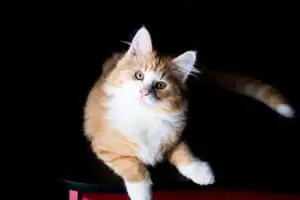
The Norwegian Forest Cat is a skilled jumper and has a playful and lively nature. Therefore it is best if he has access to a balcony or a garden.
Maybe even a scratching post for large cats inside the house, so that he can sharpen his nails and play climbing.
Therefore, if you have surfaces at home where he can jump it will be absolutely fantastic and healthy for letting out all his energy.
This curious and lively nature, however, involves a waste of calories that induce him to eat and to have an important appetite.
Precisely because of this voracity, there can be great risks of obesity caused by food, if it is not well administered.
The proportion of food actually varies according to the age, lifestyle and general health of the cat.
As for the frequency of meals, it is best to divide the two main meals into several doses. Experts recommend distinguishing doses and frequency based on the age of the cat, i.e.:
- from 8 weeks to 6 months: 3 and 4 servings a day of 25 to 30 grams each;
- After 6 months: it is possible to reduce the number of meals to 2 per day from 200 and 450 grams of food each;
- 1 year: one meal a day, it may be appropriate to divide the portion into two in the morning and in the evening of 200 and 450 grams of food each.
After 7 years it will be necessary to adapt the diet to his needs, in order to guarantee him a state of good health.

